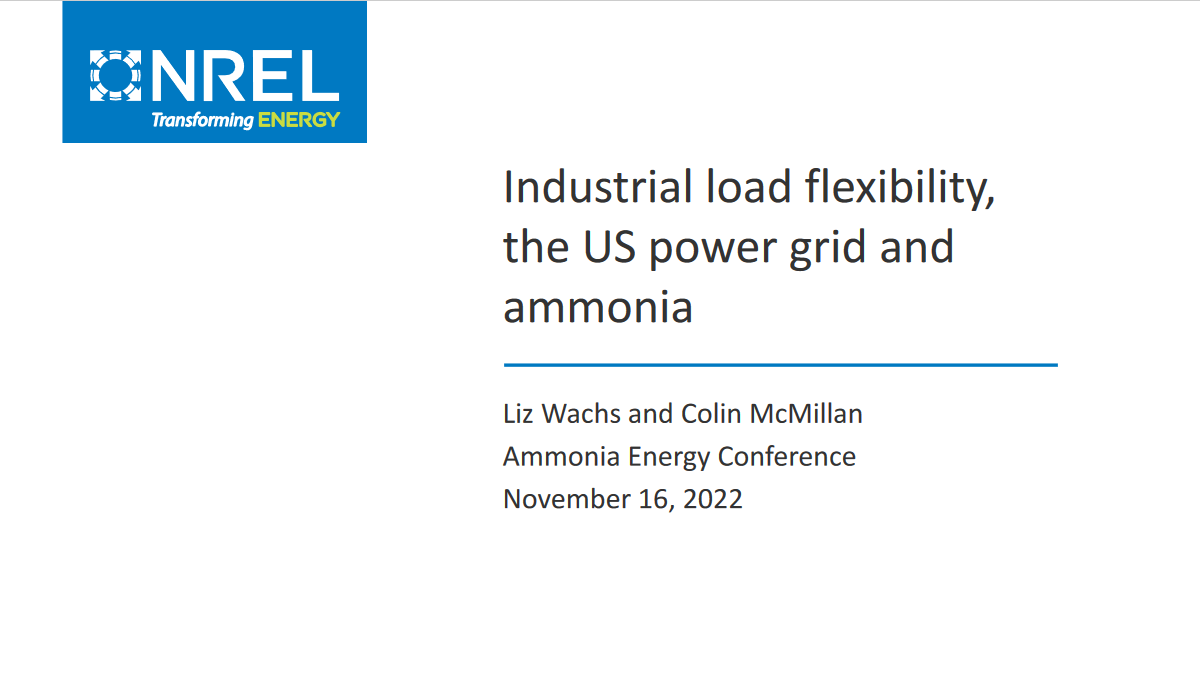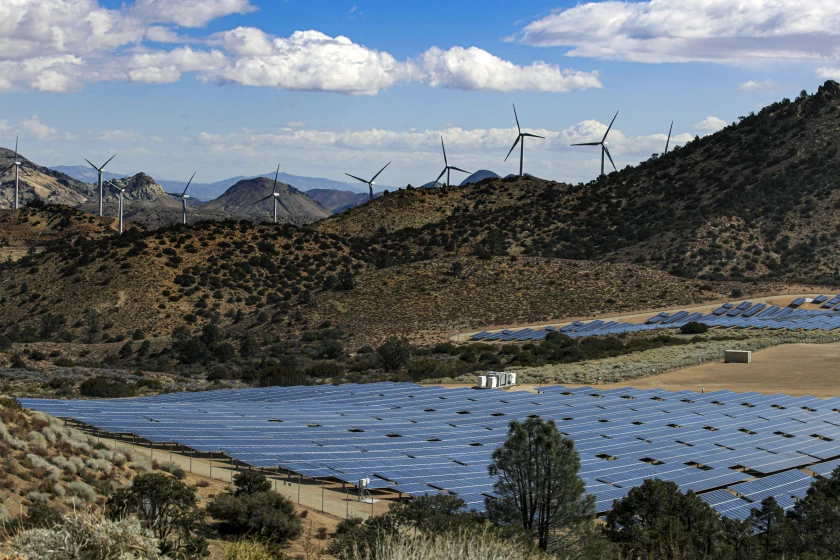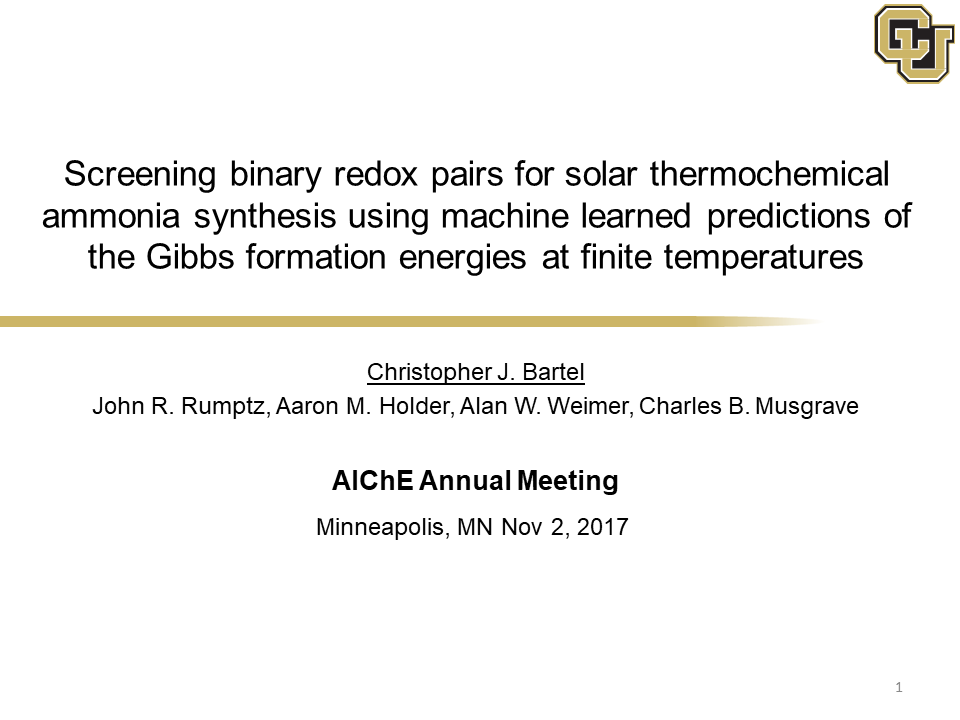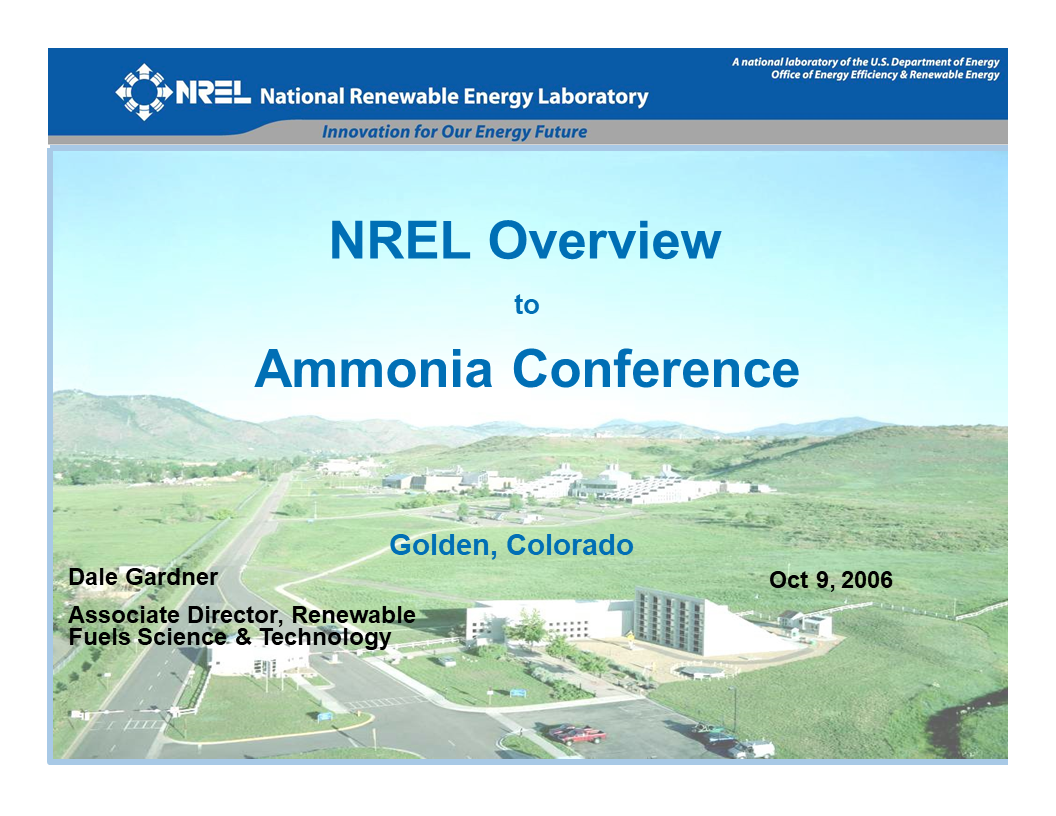Content Related to National Renewable Energy Laboratory (NREL)
Presentation
Industrial load flexibility, the US power grid and ammonia
A variable renewable power grid is a new technological regime that involves real time harvesting and low-cost availability of energy resources coupled with storage to meet additional needs. Decarbonization through electrification of end uses formerly met by combustion processes will be a concurrent trend. Taken together, these two changes may make flexibility on the demand side more valuable to the grid and to industrial users. Industry accounted for 26% of US power demand in 2021. Traditionally, industrial processes for producing ammonia and other basic materials have been optimized for a system based on fossil resources, where energy can be called…
Article
The Los Angeles Clean Energy Target & ammonia energy
Julian Atchison September 16, 2021
This week the Los Angeles City Council voted to transition to 100% clean energy by 2035, in line with President Biden’s national goals and a decade earlier than the city originally planned. This huge rollout of renewable energy generation is expected to be accompanied by a keystone role for renewable hydrogen, ammonia and synthetic methane for combustion-based power generation.
Article
Ammonia Covered in Forbes.com Power-to-X Review
Stephen H. Crolius May 16, 2019
Last week, Forbes.com published Power-To-X In The German Experience: Another In The List Of Growing Energy Transition Strategies. The article in effect nominates ammonia as a singularly promising up-and-comer in the field of the alternative energy vectors. Such an endorsement is heartening, but the article is notable as much for who is delivering the message – and the fact of its delivery under the Forbes masthead – as for what the message is.
Presentation
Ammonia: Opportunities for Grid Support
Ammonia: Opportunities for Grid Support Mark Ruth, US Department of Energy, NREL.
Article
Improvement of Haber-Bosch: Adsorption vs. Absorption
Trevor Brown December 01, 2017
At the recent NH3 Energy+ Topical Conference, Grigorii Soloveichik described the future of ammonia synthesis technologies as a two-way choice: Improvement of Haber-Bosch or Electrochemical Synthesis. Two such Haber-Bosch improvement projects, which received ARPA-E-funding under Soloveichik's program direction, also presented papers at the conference. They each take different approaches to the same problem: how to adapt the high-pressure, high-temperature, constant-state Haber-Bosch process to small-scale, intermittent renewable power inputs. One uses adsorption, the other uses absorption, but both remove ammonia from the synthesis loop, avoiding one of Haber-Bosch's major limiting factors: separation of the product ammonia.
Presentation
Screening Binary Redox Pairs for Solar Thermochemical Ammonia Synthesis Using Machine Learned Predictions of Gibbs Formation Energies at Finite Temperatures
Solar thermochemical ammonia synthesis (STAS) is a reduction/oxidation (redox) cycle which enables the production of ammonia (NH3) from air, water, and concentrated sunlight. In this process, a metal nitride (MN) is oxidized by steam to produce a metal oxide (MO) and NH3; the resulting MO is reduced at high temperature (driven by concentrated solar radiation) and subsequently used to reduce atmospheric nitrogen (N2) and reform the MN and restart the NH3 synthesis cycle. The identification of optimal redox pairs (MO/MN) for this process has been historically limited by the lack of thermochemical data (i.e., Gibbs formation energies at finite temperatures)…
Article
Next-generation ammonia tech: biohybrid nanoparticles
Trevor Brown August 02, 2017
Sustainable ammonia can be produced today: doing so would use electrolyzers to make hydrogen to feed the traditional Haber-Bosch process. In a very few years, new technologies will skip this hydrogen production phase altogether and make ammonia directly from renewable power in an electrochemical cell. Further down the pipeline, next generation technologies will mimic nature, specifically the nitrogenase enzyme, which produces ammonia naturally. One of these next generation technologies is currently producing impressive results at the US Department of Energy's (DOE) National Renewable Energy Laboratory (NREL).
Presentation
NREL overview of the 2006 conference
NREL overview of the 2006 conference Dale Gardner, NREL







